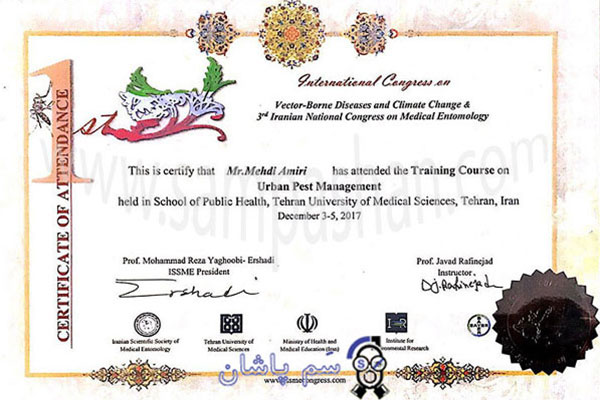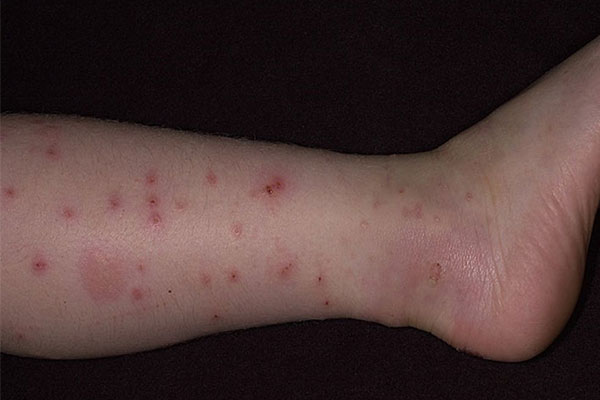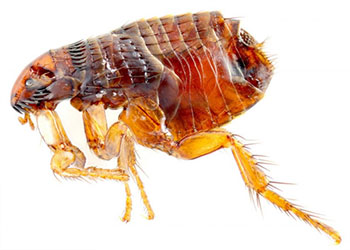Flea insect knowledge and information
Fleas from the Siphonaptra branch
What does a flea look like?
Appearance, identification and control of fleas
Size: These insects are 1 to 4 mm long. They are very small. They have 6, the last two of which are taller than their entire height. Fleas can live up to about 100 days after emerging from the cocoon.
Color: Their bodies are shiny and reddish-brown, and some species are dark brown, which is almost like black, covered with microscopic hairs, so they can easily penetrate into the skin and compressed hairs of the animal’s body surface. To move.
Wings: Fleas do not have wings, although they are able to jump high. About two or more fleas of fleas fly.
Free inspection and spraying of coke professionally and with a guarantee by spraying experts Contact 09192004096


How to identify fleas?
Freckles are often caused by domestic dogs or cats. Fleas attach to the animal when it leaves its habitat and then enter the skin and fur and the places where the animal sleeps. Preventing house and yard pollution can be difficult.Without a precautionary approach, every pet owner should be fully aware of the diseases and infections of animals that are vulnerable. Note that if you want to kill fleas when you see them, they do not die easily. Their skin is hard. Although they are very small, they do not die by hand or instrument. The flea insect has the ability to feed on your blood many times but does not die. Even if you break their long legs, they can still jump, but they can jump at shorter heights.

flea nutrition
Fleas need a meal from a host to survive. In some cases, fleas can be a problem when the host that the flea previously fed is no longer available. At this time, the fleas begin their feeding activity on the other hosts inside the house. An example of this situation is when a mouse trapped inside the house is removed, fleas that have already been fed by the mouse are forced to feed on pets or people and infect them as well.
Flea attacks creatures
Bite fleas may leave their feeding host with numerous symptoms such as swelling and itching. They can cause allergic reactions in some people and can transmit many diseases. Pets whose bodies are covered in hair and fur are most at risk. Fleas can bite people and pets and cause a big problem. .
The most serious part of flea infestation is often the time and effort involved. To deal with this problem, we need to treat infected animals, clean the flea-infected areas and take preventive measures. These measures include that you must first contact the free consultants of the specialized sprayer center and raise your issue to get rid of these annoyances by spraying fleas from your place of residence.
How can flea contamination be eliminated?
Since finding the stage of flea immaturity requires a lot of skill, the first thing we need to do is contact the pest control staff. Often using over-the-counter products to control fleas does not simply address the root cause of the infection.
Instead, a sprayer will conduct a thorough inspection and find areas where flea populations live. After the inspection, the next step is to prepare a coke management plan. This plan will include the following:
Species: Identify the flea species that are causing the problem.
Education: Explain the life cycle of fleas and how their habits, habitat and behavior affect program control.
Hosts: Check for the presence of other animals that are food sources of fleas, which may include rodents indoors or outdoors, or perhaps a raccoon or feral cat that lives in the area.
Veterinarians: The homeowner can contact a veterinarian to advise and purchase flea control products that can be used on pets.
Bathing: Regular bathing and pet care.
Chemicals: The use of growth regulators that will interfere with the natural growth and development of fleas in adulthood.
Vacuum: Uses a strong vacuum to physically destroy eggs, larvae, pupae and adults.
Bedside: Frequent washing and drying of the pet sleeping area.
Products: Treatment of infected areas using safe and effective flea control products where immature fleas may be present.
Inspections: Plan a visit and follow-up
Signs and symptoms of fleas:
Many symptoms can indicate flea activity, including:
Animal itching: A common symptom of pet itching is that it cleans and scratches itself over and over again due to the discomfort of flea activity because adult fleas feed on pet blood.
Bites: During the attack, it bites your flea and feeds on your blood, and its bite site is red and swollen, and it has a lot of itching, and it does not disappear easily and soon. (If you see these symptoms, be sure to consult your doctor for guidance).
Stools: Freckles and adult fleas can also indicate flea activity. Flea feces look like black pepper seeds and may be found in pet dormitories, carpets, rugs, and other areas where animals rest.
Adult fleas: Since fleas are relatively easy to see during their maturation stage, most attention is paid to adult fleas. Adult fleas are usually easy to settle in, especially if the homeowner and his or her pets return home after a long vacation and absence, during which adult fleas can reach their blood meals, after the owner returns. Homes are often faced with flea fleas jumping on the pet and trying to catch it from the animal.
Flea eggs: Flea eggs, larvae and pupae have a different condition. Because these steps are less active and more hidden, they are found in unusual places, such as:
-Back, under or sides of furniture
– In the pet bed
-Inside the gaps and grooves of the floors
-In carpets
The flea eggs laid by the female flea fall from the pet’s skin as it moves and scatter in the environment in which the animal lives.
Facts
What do they eat?
Adult fleas are parasites that draw blood from a host. The larvae feed on fecal matter, especially the feces of adult fleas, which contain undigested blood. Fleas usually prefer hairy animals for feeding and eating, such as:
Dogs, cats, rabbits, squirrels, mice, pets, wild animals
Freckles after feeding:
Can fleas transmit the disease?
Yes, fleas can transmit the infection through the blood of a host or through fecal pellets.
Egg
The egg is not attached to the host. Eggs are laid in the following places:
On the floor, in rugs, carpets, sheets, upholstery, floor crevices
The eggs often hatch within two days.
Using deprivation techniques is important for many pest problems, but it is not helpful for controlling fleas. However, having gaps and holes to help keep rodents or other potential hosts out of the house is an indirect and important way to keep fleas out.
The most effective way to prevent fleas from entering the house is to remove habitats and houses outdoors as well as the use of coke control chemicals and coke control products for pets must be approved by veterinarians.
The most common types of animal fleas:
Dog flea (ctenocephalides canis)
Cat flea (ctenocephalides felis)
Human fleas and clothes
Fleas of domestic animals
Cat fleas are the most common fleas in North America, although rat and dog fleas, humans and eastern rat fleas can also be found.
Pets suffer directly from flea bites and itching. Fleas also feed on humans, and some people develop flea allergies.
Spraying fleas on your home or place of residence will lead to a healthier life, so if you see this insect in your home, be sure to contact the trained spraying team.
You should know that:
If you see fleas in your area and the symptoms are consistent with the symptoms mentioned above, you should know that you have encountered a difficult insect because it is black to remove and eliminate it from the home environment. Flea insects can move very quickly in a few meters in a few seconds in the house because they jump easily, which is why if you spray the house, you may see it somewhere else, so we conclude in the first place. If you see fleas in the first house, contact the spraying specialists and then spray all the corners of the house to get rid of them anywhere in your house.
